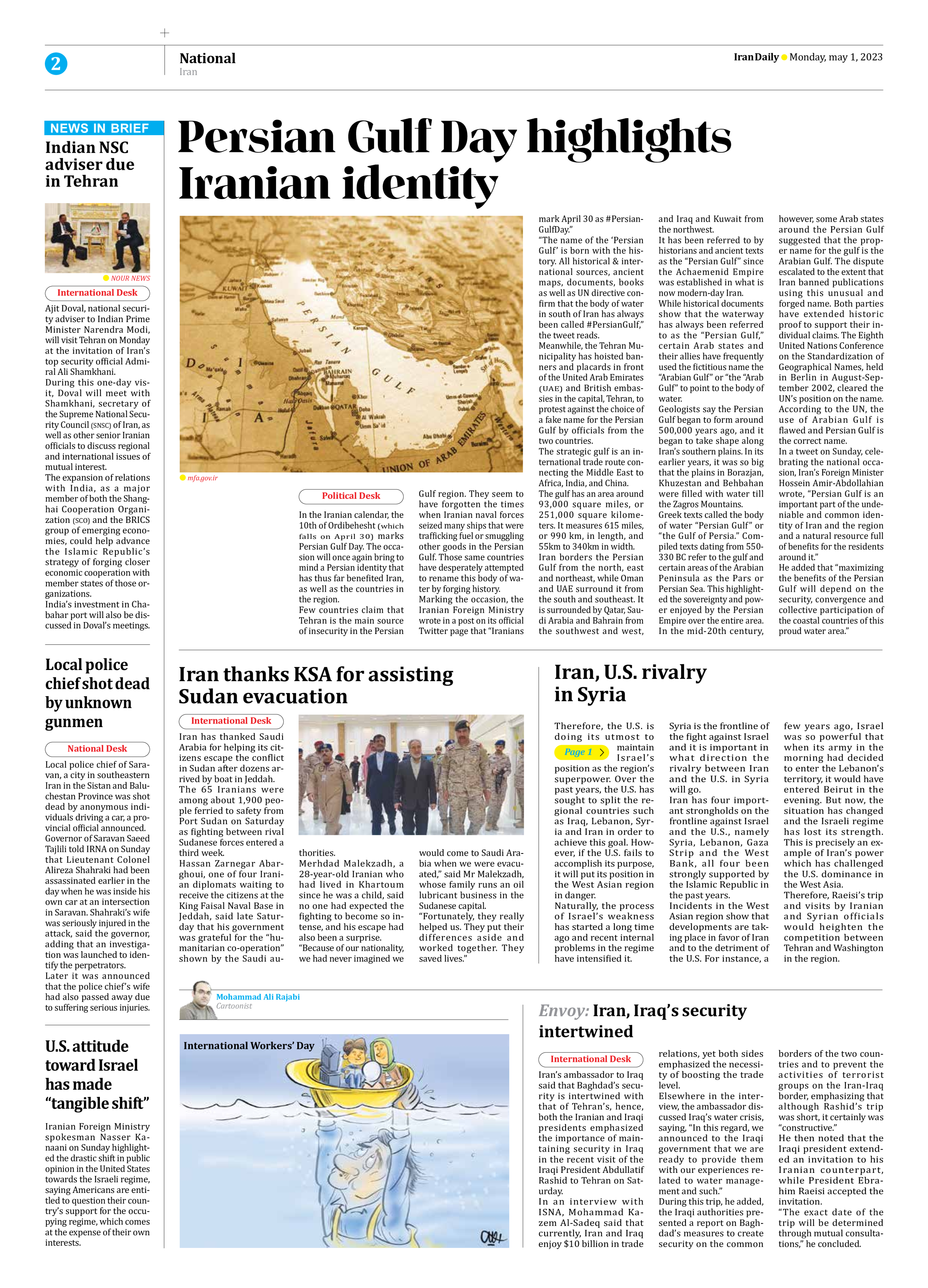
Persian Gulf Day highlights Iranian identity
In the Iranian calendar, the 10th of Ordibehesht (which falls on April 30) marks Persian Gulf Day. The occasion will once again bring to mind a Persian identity that has thus far benefited Iran, as well as the countries in the region.
Few countries claim that Tehran is the main source of insecurity in the Persian Gulf region. They seem to have forgotten the times when Iranian naval forces seized many ships that were trafficking fuel or smuggling other goods in the Persian Gulf. Those same countries have desperately attempted to rename this body of water by forging history.
Marking the occasion, the Iranian Foreign Ministry wrote in a post on its official Twitter page that “Iranians mark April 30 as #PersianGulfDay.”
“The name of the ‘Persian Gulf’ is born with the history. All historical & international sources, ancient maps, documents, books as well as UN directive confirm that the body of water in south of Iran has always been called #PersianGulf,” the tweet reads.
Meanwhile, the Tehran Municipality has hoisted banners and placards in front of the United Arab Emirates (UAE) and British embassies in the capital, Tehran, to protest against the choice of a fake name for the Persian Gulf by officials from the two countries.
The strategic gulf is an international trade route connecting the Middle East to Africa, India, and China.
The gulf has an area around 93,000 square miles, or 251,000 square kilometers. It measures 615 miles, or 990 km, in length, and 55km to 340km in width.
Iran borders the Persian Gulf from the north, east and northeast, while Oman and UAE surround it from the south and southeast. It is surrounded by Qatar, Saudi Arabia and Bahrain from the southwest and west, and Iraq and Kuwait from the northwest.
It has been referred to by historians and ancient texts as the “Persian Gulf” since the Achaemenid Empire was established in what is now modern-day Iran.
While historical documents show that the waterway has always been referred to as the “Persian Gulf,” certain Arab states and their allies have frequently used the fictitious name the “Arabian Gulf” or “the “Arab Gulf” to point to the body of water.
Geologists say the Persian Gulf began to form around 500,000 years ago, and it began to take shape along Iran’s southern plains. In its earlier years, it was so big that the plains in Borazjan, Khuzestan and Behbahan were filled with water till the Zagros Mountains.
Greek texts called the body of water “Persian Gulf” or “the Gulf of Persia.” Compiled texts dating from 550-330 BC refer to the gulf and certain areas of the Arabian Peninsula as the Pars or Persian Sea. This highlighted the sovereignty and power enjoyed by the Persian Empire over the entire area.
In the mid-20th century, however, some Arab states around the Persian Gulf suggested that the proper name for the gulf is the Arabian Gulf. The dispute escalated to the extent that Iran banned publications using this unusual and forged name. Both parties have extended historic proof to support their individual claims. The Eighth United Nations Conference on the Standardization of Geographical Names, held in Berlin in August-September 2002, cleared the UN’s position on the name. According to the UN, the use of Arabian Gulf is flawed and Persian Gulf is the correct name.
In a tweet on Sunday, celebrating the national occasion, Iran’s Foreign Minister Hossein Amir-Abdollahian wrote, “Persian Gulf is an important part of the undeniable and common identity of Iran and the region and a natural resource full of benefits for the residents around it.”
He added that “maximizing the benefits of the Persian Gulf will depend on the security, convergence and collective participation of the coastal countries of this proud water area.”







